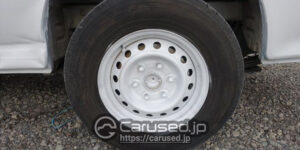When it comes to learning the essential car maintenance tips, you should also know how to read spark plugs. After all, they can provide important information about the performance of your vehicle. Aside from that, the condition of your spark plugs can also predict potential problem in your car. So, whether you want to buy used van from Japan or a brand-new vehicle from your local dealership, it would help if you know how to read your spark plugs and identify when you have them replaced.
Properly reading a spark plug involves assessing the color and the condition of its tip. In general, if the color around its tip is light tan, then it means that it is healthy and your car has a good-performing engine. If it is in any other color, then it means that there might be issues with the fuel system, engine, or the ignition. Here are some things to keep in mind when you’re reading spark plugs:
Grayish-Tan or Brown Deposits
When the sides of the electrodes have grayish-tan or brown deposits, it means that you have a healthy spark plug. There is nothing wrong with it. So, you can reinstall it to your car and continue driving to your destination.
Dry and Black Soot
If you discover dry and black soot on the insulator tip and electrodes, then it means that you have a carbon-fouled plug. It is possible that you’ve been excessively driving at low speeds or you simply have a dirty air filter. This can also be caused by idling your car for too long or by too rich of a fuel/air mixture. You can always have your mechanic check it, and they will offer you advice on what spark plug you need to buy. On the other hand, you may want to consider a higher spark plug number.
Oily Deposits
Watch out for black, oily deposits on the insulator tips and the electrodes. This could indicate an oil-fouled plug which is a sign that oil has been leaking into the cylinders, getting past possibly worn cylinders or valve guides. It is important to find the source of the leak. In this case, you must ask for guidance from a mechanic. Once you’ve identified the source of the issue, then you would be able to know if you should replace your spark plug.
Wet Spark Plugs
If you notice that your spark plug is wet, then this is possibly due to engine flooding. This happens when you attempt to start the engine many times without it firing up. If you need to go immediately, simply clean the spark plugs. On the other hand, you can always just wait for it to dry.
Burnt
When you notice melted electrodes, white deposits, or blisters on the insulator tip, it means your spark plug is running too hot and it is burnt. It might be caused by an overheating engine, a loose spark plug, incorrect heat range for the spark plug, too lean of a fuel/air mixture, or incorrect ignition timing. This is an indication that you need to replace the spark plug.
Eroded Electrodes
If you see that the electrodes are worn, it means that the spark plug is past its prime. To put it another way, the plug has been living in the engine for too long and you need to replace it.
Flattened or Broken Electrodes
Flattened or broken off electrodes are indications that you’ve installed the wrong spark plug. Keep in mind that when your spark plug is too long, it may bring extensive damage to your engine. On the other hand, when you have a spark plug that’s too short, you might have to deal with fouling or poor gas mileage. So, it is essential to check your manual to know what type of spark plug is suitable for your vehicle.



